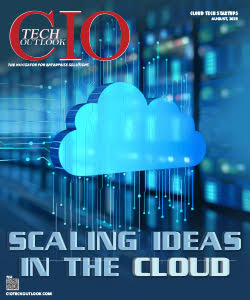How to Make D2C Model Sustainable
Abhrasnata Das | Tuesday, 10 May 2022, 17:13 IST

Thanks to Covid, more than 800 new-age brands have embraced the D2C channel in India, bidding Fare-thee-well to the B2C model. Along with a series of lockdowns, the other factors like - growth in ecommerce penetration, the rise in digital infrastructure, the growing millennial population, an increase in consumer tech awareness, has propelled the growth of the D2C market in India.
Today, the new age brands like Mamaearth, Lenskart, Nykaa, Country Delight, Azah, have made a robust space in the Indian consumer market, threatening the share of the bigger and well-established players like Johnson & Johnson, Himalaya, Hindustan Unilever, ITC, Lakme, Titan Eye+, etc.
Moreover, while popular beauty brands such as Revlon and Lotus took around 20 years to reach the INR 100 Cr revenue mark, new-age brands like Mamaearth and Sugar took four, to cross the same milestone.
However, what's important here is to note, not all the players operating in the D2C model have received the exponential growth like Nykaa, Lenskart, Mamaearth or Sugar. On the not so well discussed down side, there are many who are struggling to reach, understand and deliver to their clients. Now the question standing tall is “WHY?”
Despite the fact that each of these businesses has its own distinct D2C business strategy, they all leverage upgraded channels and modern technology to reach and better serve their clients. If we take the example of Lenskart, this company was amongst the first to introduce “try on’’ in the Indian market. With the implementation of “Augmented reality” in their website and app, the company successfully removed the most daunting confusions from its clients minds in regards to — looks, size and fit.
That being said, in this let's look into the key tech trends that will refine the D2C model in the coming days.
Omni Channel Presence
Shopping patterns have shifted in recent years, leading in a surge in demand for seamless engagement across different platforms. To improve the visibility and interaction across several channels, brands now need to do extensive cross-channel research.
Omnichannel has several advantages, including improved analytics, engagement, and purchasing experience. Using the correct technology will undoubtedly assist a firm in establishing a presence across all platforms. Customers are three times more likely to make a purchase if a firm can offer omnichannel personalisation, according to Mckinsey. Order values for such brands may increase by 13 percent.
Mama Earth, a personal care brand, used this strategy in their business. The firm did not restrict to using D2C as the sole channel for selling to consumers. They also had a marketplace presence in Amazon and Flipkart, and in retail stores such as Shoppers Stop and Central. Considering that they were themselves digital-natives, they allocated 90% of their marketing budget to digital platforms and influencer marketing and 10% to traditional media. Despite fierce competition from brands like Johnson & Johnson and FirstCry, Mama Earth has managed to cross the Rs 100-crore mark within four years!
Augmented product Display
With proper implementation of Augmented reality, the brands can unleash a whole new window of experience for its clients. As augmented reality takes a more robust shape, it will metamorphose the notion of online shopping.
“Consumer expectations have shifted dramatically in the past couple of years. The biggest change that we have seen is the consumer discovery and shopping journey– it is now a combination of offline & online. As a beauty tech company committed to digital transformation, we have been focused on deploying new technologies to enhance our products and customer experiences,” says Amit Jain, Managing Director, L’Oréal India to ET.
L’Oréal India is working closely with ModiFace, a company offering Augmented Reality tech for the beauty brands. Collaborating with ModiFace, L’Oréal India wants to offer virtual try-ons to its clients for make-up and hair color and one-on-one beauty consultations via video chat; which has proved especially useful while the stores were closed.
Conversational marketing providing 24x7 support
With the number of customers that retailers have to deal with daily, they need to be able to address queries and identify opportunities at any given time. Conversational marketing is one of the most effective strategies for attracting customers and resolving their concerns. Using artificial intelligence (AI) and automation tools for customer service is a terrific method to increase website traffic.
Chat and speech bots powered by AI and integrated with machine learning (NLP) can have human-like conversations with customers and learn from each engagement. Because of their automated nature, these technologies are available 24 hours a day, seven days a week, assisting retailers in responding to client inquiries regarding products and services and eliminating or considerably reducing wait periods.
“It’s time to imagine messaging apps as the new browsers, and conversational experiences – delivered by brands via messaging channels – as the new websites,” says Beerud Sheth, co-founder and CEO of Gupshup, a leading conversational engagement platform, to FE.
Haptik, one of India's foremost conversational AI specialists, recently created a chatbot for Aashirvaad, the country's largest wheat flour mill. The bot responds to users' questions about various quality options, costs, and nearby delivery locations, among other things. Even retailers of basics, such as Aashirvaad, with such a long brand history, invest in chatbot installation, demonstrating its critical role in future consumer interaction.
What’s Next?
There are a number of D2C eCommerce trends to watch. New technologies will be introduced in the next year that will refine the client journeys and a better brand experience. The D2C business is dominated by social commerce, AI-ML capabilities, livestream shopping, augmented reality, and conversational commerce. In the future decades, these skills will benefit both the client and the brands.


.jpg)

